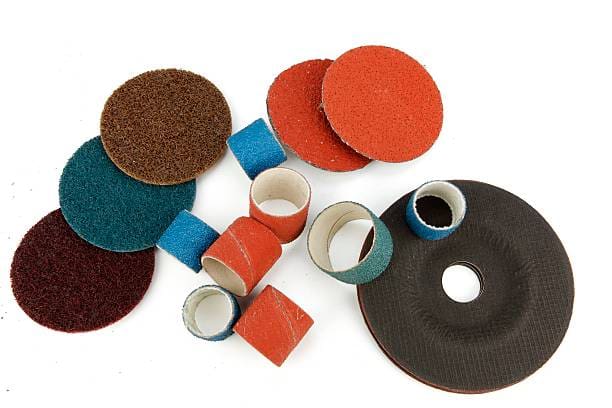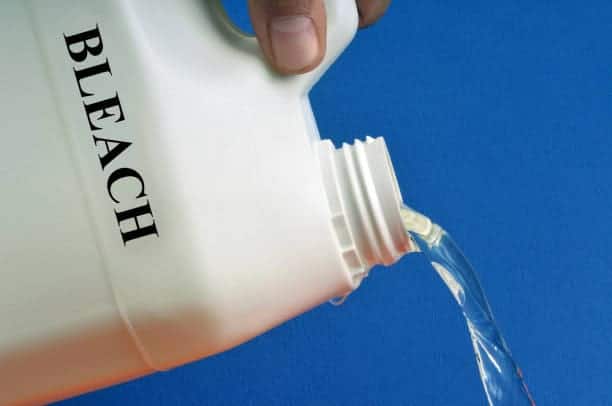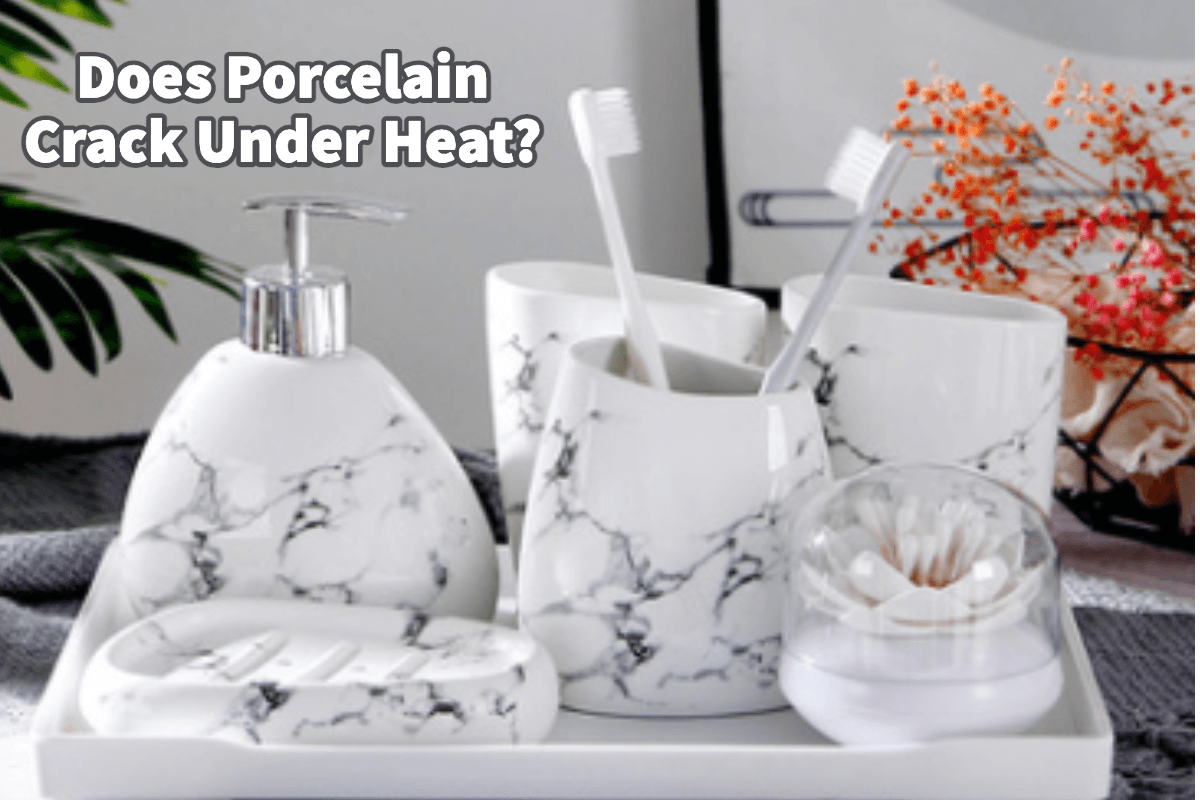Porcelain is a type of material made from clay, and it is used for many different home decor and home furnishing products. Porcelain is a material that has been used for centuries.
Porcelain is a highly durable clay fired at very high temperatures, often called “high-fired porcelain.” Because it is fired at such high temperatures, it is tough for porcelain to crack or damage due to heat.
Table of Contents
- Porcelain And Heat
- Porcelain Is The Highest Fired Type Of Clay
- Porcelains Heat Resistance Properties
- Video: Porcelain Creating 3D Products.
- The Art and Science of Porcelain: 10 Fascinating Facts
- Frequently Asked Questions
- Related Content
Porcelain And Heat
Porcelain is considered to be high-fired clay. Porcelain is usually fired at above 2300°F. Many people call it high-fired porcelain because it is fired at high fire temperatures.
Because porcelain is fired at such a high temperature, it is a heat-resistant material. For porcelain to crack, it would need to be in a temperature higher than 2600°F, which would be extremely high temperatures.
All kinds of porcelain, even tiles, can withstand high amounts of heat. It is considered a durable material for home decor accessories, lamps, or even tile flooring.
Porcelain Is The Highest Fired Type Of Clay
Porcelain is the highest-fired type of clay, especially when compared to stoneware or earthenware. This high-fire nature makes it an ideal type of clay to use for many kinds of products. The high-fired nature also means that it is highly heat resistant.
Three types of clay are typically used: porcelain, ceramic, and earthenware. Of all these three, porcelain is fired at the highest temperature possible.
Below is information and comparisons about these three types of clay and the firing temperatures for each.
Porcelain Firing Temperatures
Porcelain is usually fired in a kiln anywhere between 2200°F and three 2600°F or 1200°C and 1400°C. This makes it a highly high-fired kind of clay. It also means that it is extremely heat resistant and extreme.
Kaolin is the material from which porcelain is made. Kaolinite is a clay mineral and is the substance that is used to make this tough and translucent material known as porcelain.
Stoneware Firing Temperatures
Stoneware is what most people refer to as pottery. Stoneware is fired from 2100°F to 2372°F, or between About 1200°C to 1400°C.
Compared to porcelain, stoneware is not fired at as high temperatures but is still fired at a very high temperature. If you have a stoneware item, it should not crack unless exposed to heat higher than 2372°F or 1400°C.
Earthenware Firing Temperatures
Earthenware is an iron-rich clay that can be fired at low temperatures between 1300°F to 2120°F. Of all three of the clays, earthenware is the one that breaks the easiest and has the lowest temperatures in the firing process.
Porcelains Heat Resistance Properties
Porcelain is the highest fired degree of heat from all three materials. Porcelain, stoneware, and earthenware materials should withstand heat, especially if put under hot water or in an oven.
It would be challenging for porcelain to be damaged by heat. You can usually put a hot pot of boiling water on a porcelain surface, which will not scorch or damage the surface.
It also means that porcelain is extremely heat resistant and a very durable type of material. It would be tough for porcelain to crack just under heat.
How Porcelain Can Crack
Even though heat is a tough way for porcelain to crack, there are ways that porcelain can crack. Porcelain can crack when porcelain tiles are put on a floor, and the tiles are not level, so the tiles can break under stress.
If you have porcelain tiles on a floor and the subfloor is not stiff enough, so there is a lot of movement on the floor, the porcelain tiles can crack due to stress, wear and tear. Porcelain has an average breaking strength of 275 pounds, so if heavy objects are put on a tile floor that has movement, the porcelain tiles can crack.
When placed outside, porcelain tiles are tough and naturally weather-resistant, even in freezing weather. Porcelain does not absorb water, so it will not crack due to the cold. Porcelain is an ideal material to use for flooring and tile because it will not be cracked due to extreme heat or extreme cold.
Other Ways Porcelain Can Damage
Porcelain does not usually damage due to heat or cold, but there are other ways that it can get damaged. Most of the ways it is damaged are due to misusing or not understanding the porcelain tiles.
Here are some ways that porcelain can get damaged:

- Abrasives – Cleaning products or tools that are gritty or abrasive could damage or scratch your porcelain. Porcelain is not meant to be used with abrasive cleaning products or tool.

- Bleach – Bleach or ammonia-based cleaners have also been known to hurt porcelain or hurt the grout that is used between the tiles. We recommend using soap and water to clean any of your porcelain, including the grout or between the porcelain tiles.
Porcelain is a very durable and tough material that is high-fired clay. Porcelain is an ancient material that has withstood the test of time.
Porcelain can withstand extreme heat. That is why porcelain will often withstand extreme heat and fire if there is a house fire.
Video: Porcelain Creating 3D Products.
Porcelain can even be used to create 3-D products. Watch our video below to see how 3D porcelain is made using technology in a factory in China.
The Art and Science of Porcelain: 10 Fascinating Facts
Porcelain, often called “china” or “fine china” because of its Chinese origins, has long been admired for its delicate beauty and remarkable strength. Porcelain possesses a timeless allure, whether it’s a dinner set’s elegance or a decorative piece’s intricacy.
Let’s delve into ten captivating facts about this remarkable material:
- Ancient Origins: Porcelain has been in production for over 2,000 years, with its origins traced back to the Eastern Han Dynasty of China.
- Composition: True porcelain is made from a specific clay called kaolin, combined with feldspar, ball clay, and bone ash. This unique combination gives porcelain its distinctive properties.
- High Firing Temperature: Porcelain is fired at extremely high temperatures, usually between 1,200 and 1,400°C (2,200 and 2,600°F). This high-temperature firing vitrifies the material, making it glass-like and translucent.
- Strength in Delicacy: Despite its delicate appearance and thinness, porcelain is notably strong and durable due to its vitrified nature.
- Translucence: One of the defining characteristics of porcelain is its translucent quality when held up to light. This is especially evident in fine porcelain pieces.
- Versatility in Art: Porcelain has been used to create various objects, from functional dinnerware to highly detailed figurines and intricate vases.
- The European Quest: The exact porcelain-making method remained a closely guarded secret in China for centuries. It wasn’t until the early 18th century that the secret of making porcelain was discovered in Europe, with Meissen in Germany being the first European porcelain production site.
- Types of Porcelain: There are various types of porcelain, including hard paste (the original type made in China), soft paste (a European version made before the secrets of hard paste were discovered), and bone china (made with bone ash and known for its bright whiteness).
- Porcelain and Health: In the 18th and 19th centuries, porcelain dinnerware was sometimes preferred over lead-glazed earthenware because it was considered safer and didn’t run the risk of leaching lead into food.
- Cultural Significance: Porcelain has significantly influenced trade and cultural exchanges. The “Porcelain Route,” or the maritime component of the “Silk Road” facilitated the movement of porcelain, ideas, art, and culture between the East and West.
In appreciating the allure of porcelain, one finds a blend of artistry, science, history, and culture. It’s not just about beautiful dinnerware or ornate decorative pieces; it’s a testament to human ingenuity and the relentless pursuit of perfection.
We would love to help you with your porcelain manufacturing. Find out more about how Mondoro can help you create, develop, and manufacture excellent home decor and home furniture products – don’t hesitate to contact me, Anita. Check out my email by clicking here or become a part of our community and join our newsletter by clicking here.
Mondoro gives out a FREE Lookbook to anyone interested. You can receive a copy of our latest Lookbook by clicking here.
Listen to our Podcast called Global Trade Gal. You can find it on all major podcast platforms. Try out listening to one of our podcasts by clicking here.
Subscribe to our Mondoro Company Limited YouTube Channel filled with great videos and information by clicking here.
Frequently Asked Questions
What is the temperature resistance of porcelain?
Porcelain is highly resistant to temperature changes and can withstand high temperatures without cracking or melting.
What temperature can porcelain withstand before it cracks?
Porcelain can withstand high temperatures up to 1,200 degrees Celsius before it cracks.
Is porcelain heat-resistant?
Yes, porcelain is heat resistant and can withstand high temperatures without melting or deforming.
Are porcelain tiles heat-resistant?
Yes, porcelain tiles are heat resistant and can withstand high temperatures without cracking or warping.
What is the temperature range that porcelain tiles can withstand?
Porcelain tiles can withstand temperatures up to 1,200 degrees Celsius without cracking or breaking.
Can porcelain tiles be used around fireplaces or on the floor with underfloor heating systems?
Yes, porcelain tiles are an excellent choice for fireplaces and underfloor heating systems, as they are highly resistant to heat and temperature changes.
Is porcelain more heat resistant than ceramic?
Yes, porcelain is generally more heat resistant than ceramic, as it is fired at a higher temperature and has a denser structure.
Is porcelain cookware heat-resistant?
Yes, porcelain-coated cookware is heat resistant and can withstand high temperatures without melting or warping.
Can porcelain be used for outdoor applications?
Yes, porcelain-coated cookware is heat resistant and can withstand high temperatures without melting or warping.
Related Content
Earthenware, Stoneware, And Porcelain Materials
Earthenware, stoneware, and porcelain are all made by various clays and then fired. The kind of clay used and the temperature they are fired at can make a difference as to how soft or hard the actual end product is. Though they can all seem to be similar, they are all very different materials and products.
You can discover more by reading Earthenware, Stoneware, And Porcelain Materials by clicking here.
50+ Favorite Quotes About Porcelain
We love the look and feel of porcelain, so we have found some of our favorite quotes about porcelain for you. Some of these are funny quotes, and others show us why we love the porcelain material so much.
You can find out more about PVD by reading our blog 50+ Favorite Quotes About Porcelain by clicking here.
3-D Porcelain Manufacturing, All You Need to Know
Brass and bronze are both copper alloys, brass and zinc, and bronze material is copper and tin. They both look similar but have different properties and uses. When brass or bronze is made into home decor products, they will often be sand cast or use a lost wax or investment mold technique. Each production method has different uses, and prices can affect the overall production.
You can find out more about brass and bronze by reading our blog 3-D Porcelain Manufacturing, All You Need to Know by clicking here.

